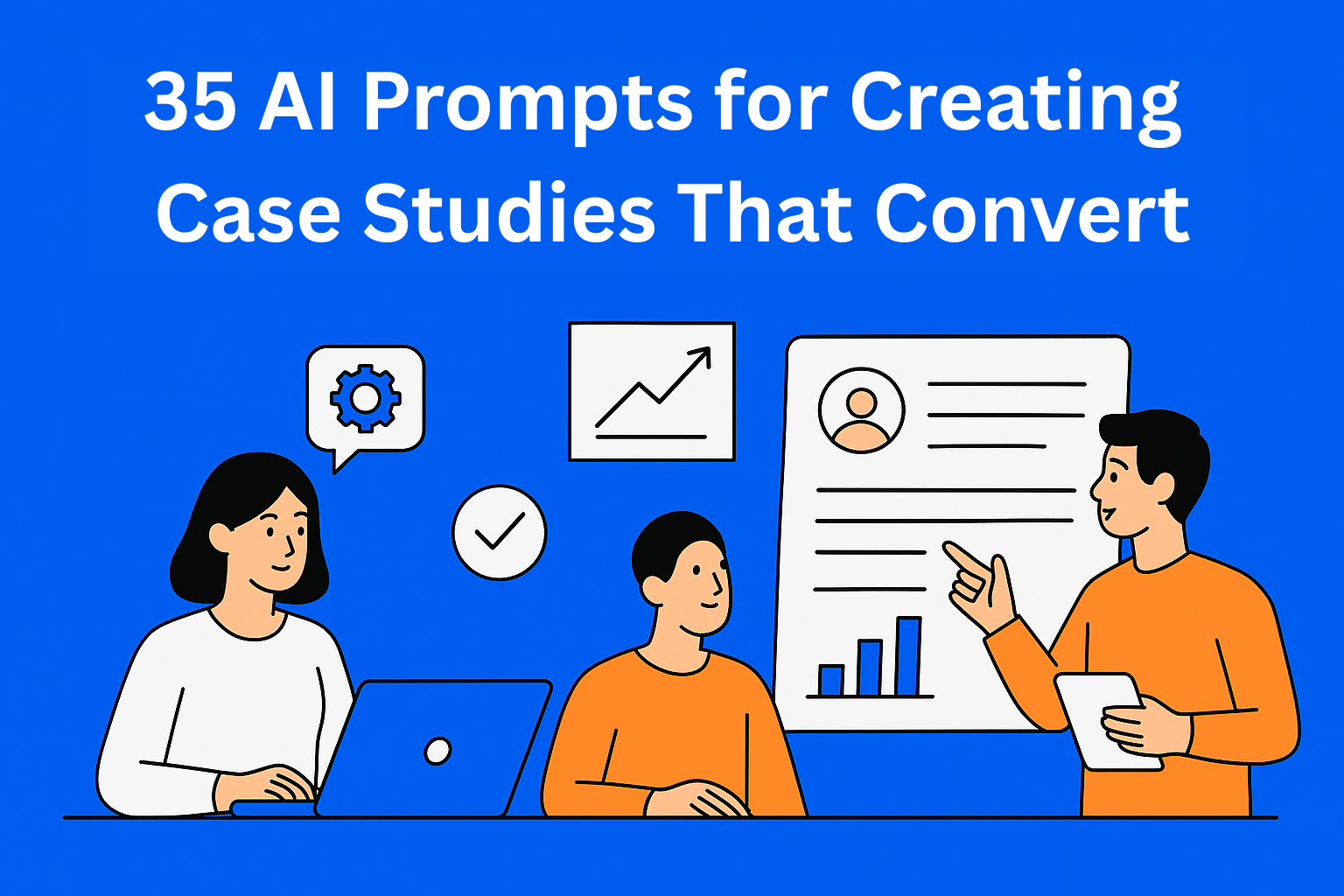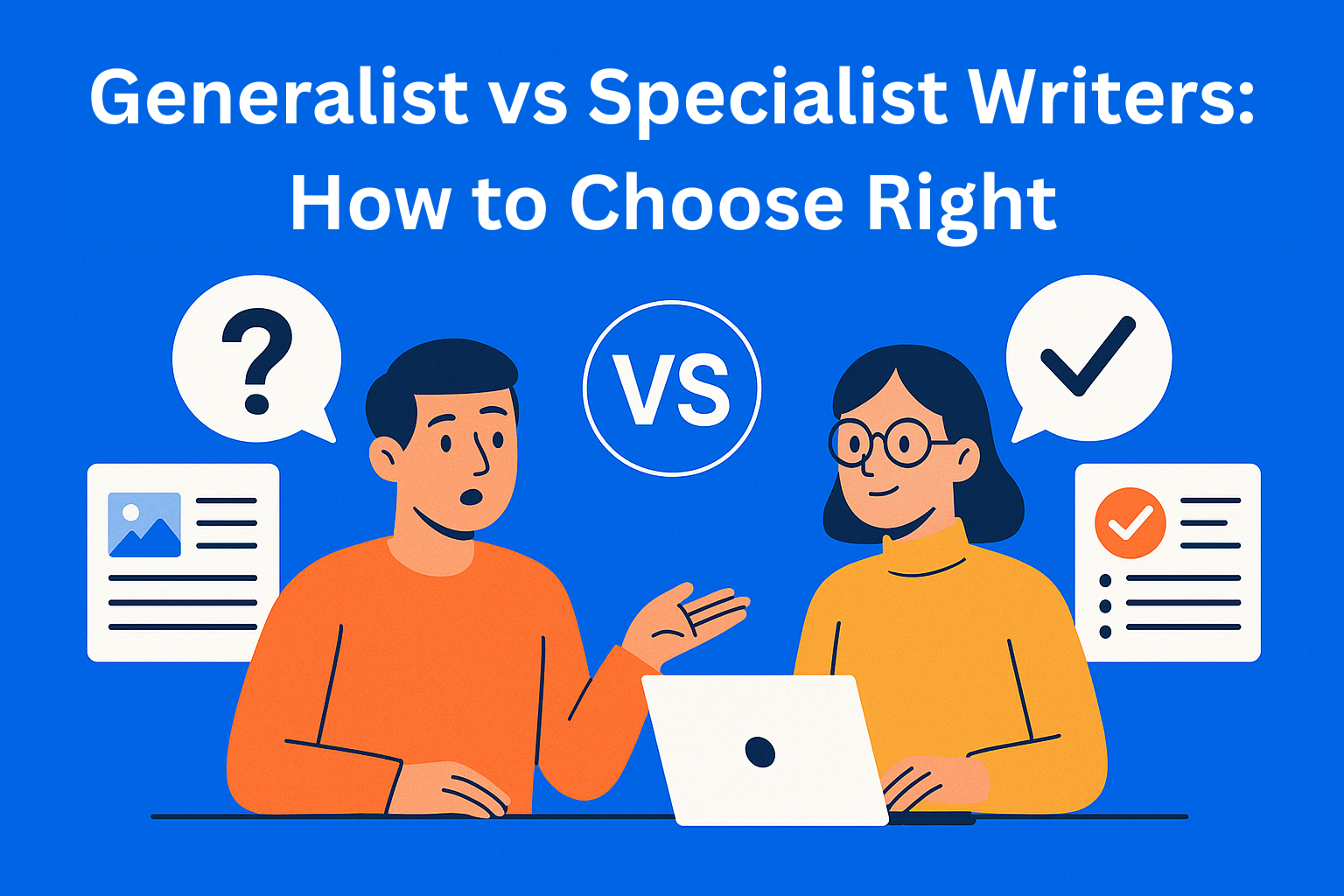35 AI Prompts for Creating Case Studies That Convert
Create clearer, stronger, and more convincing case studies with 35 simple AI prompts. Learn how to turn real results into stories that build trust, boost credibility, and help you create case studies that truly convert.

Case studies are one of the simplest ways to show what your product or service actually does in practice. People don’t trust marketing as much as they trust real experiences from others. That’s why case studies are such a powerful tool, they combine a story, concrete results, and proof. With the help of artificial intelligence, you can create all of this much faster and easier, even if you’ve never written a case study before. This blog will show you how.
Below you’ll find 35 AI prompts you can use right away. Their goal is to help you create clear, convincing, and effective case studies that increase conversions.
Key Takeaways
- Case studies convert because they offer proof, not promises - real problems, real processes, and real results make potential buyers trust your solution.
- AI makes case study creation dramatically easier by helping you organize details, write drafts, and simplify complex information without losing clarity.
- A strong case study always follows the same structure - problem, process, and results, and AI prompts help you build each part cleanly.
- Different prompt categories cover every stage - research, storytelling, visuals, SEO, testimonials, and conversion, so you can generate complete case studies quickly.
- You don’t need all 35 prompts every time - choosing 5-10 targeted prompts makes the process faster and tailored to your industry and goals.
Why Case Studies Matter So Much
When a potential customer is deciding whether to trust you, they look for proof. They don’t want promises, they want examples. A case study shows how you helped someone similar to them solve a real problem. At that moment, the customer recognizes themselves in the story.
The best case studies that convert usually include three main parts: the problem, the process, and the result. When this structure is combined with clear data and simple language, the outcome is a case study that can directly influence a customer’s decision.
AI makes every part of this process easier. With the right AI case study prompts, you can generate ideas, structure, and even a first draft, and then simply adjust it to your style.
How AI Makes Case Study Writing Easier
For AI to deliver a quality result, you need to give it enough information. This doesn’t have to be complicated, basic details about the client, the problem, and the results are enough. A clear prompt structure helps AI create content that is easy to read and completely understandable.
If something is off or you don’t get what you want, just add more information or include extra details. It’s a simple and repeatable process. When you use AI case study prompts, you learn how to clearly communicate what you want, which leads to better content.
35 AI Prompts for Case Studies
Below are prompts grouped into logical categories. You can use them in any industry, SaaS, marketing, e‑commerce, consulting, education, and many more. Each prompt is designed to help you create clear and effective content.
A) Prompts for Research and Structure
- "Create a case study outline based on the following information: [insert data]."
- "Summarize the main challenges the client faced before working with us."
- "Organize the information into a logical flow that is easy to read."
These prompts help you start with clarity. A well‑defined structure is the foundation of all case studies that convert.
B) Prompts for the Introduction
- "Write a simple and short introduction that immediately explains the client's main problem."
- "Create an attention‑grabbing one‑sentence hook."
- "Write three versions of the opening paragraph so I can choose the best one."
The introduction should be light, easy to understand, and invite the reader into the story.
C) Prompts for Describing the Problem
- "Explain in simple language what challenge the client was facing."
- "Describe what the client’s business looked like before using our solution."
- "Create a clear list of key pain points the client was dealing with."
Clearly presented problems make the case study feel real and believable. This is also a natural place to mention AI case study prompts if you're explaining the tools you used while writing.
D) Prompts for Explaining the Solution and Process
- "Explain our approach to solving the problem, step by step."
- "Translate the technical details into simple, everyday language."
- "Create a narrative that shows why our solution was the right choice for this client."
This part must be clear and uncomplicated. The goal is to help the reader understand the process, even if they know nothing about the topic.
E) Prompts for Presenting the Results
- "Turn these results into a clear improvement story: [insert results]."
- "Highlight the most important metrics and explain why they matter."
- "Write a short ‘at‑a‑glance’ version of the results."
Results should be easy to understand. Whenever you show growth, improvement, or savings, the case study becomes stronger.
F) Prompts for Storytelling
- "Turn the case study into a simple story that anyone can understand."
- "Simplify the story to show how the client went from problem to success."
- "Write the case study from the client’s point of view."
This writing style has the biggest impact on conversions, people connect with stories.
G) Prompts for Visual Elements
- "Suggest charts that would make the results easier to understand."
- "Write a description of an image that could accompany the case study."
- "Suggest an infographic layout for the key information."
Visual elements make case studies clearer and more compelling.
H) Prompts for Quotes and Testimonials
- "Turn the following client comment into a clear and useful quote: [text]."
- "Create a professional version of this testimonial based on the raw text."
- "Write three short quote variations in different styles."
Good quotes add authenticity and strengthen the message.
I) Prompts for Conversion
- "Suggest several calls to action that fit this case study."
- "Write a closing paragraph that guides the reader to the next step."
- "Create a list of key benefits that encourage a faster decision."
This section shifts toward sales, but still in a natural, friendly tone.
J) Prompts for SEO
- "Write a short SEO description for this case study."
- "Suggest ideal H2 and H3 headings for better organization."
- "Create a meta description that attracts clicks."
SEO helps more people find your case studies that convert.
K) Prompts for Different Formats
- "Turn the entire case study into a short LinkedIn post."
- "Write a brief version of the case study for a landing page."
- "Create an executive summary in 5 simple sentences."
This helps you use the same content across multiple platforms.
L) Prompts for Final Polishing
- "Clean up the text and remove unnecessary words, while keeping the style and tone."
- "Align the entire case study with the brand voice without complicating the language."
This is the final stage. When you use AI case study prompts here, you get a clear and professional final text.
How to Choose the Right Prompts for Your Industry
When working with AI, every case study can be adapted to the type of business you run. If you’re in SaaS, you’ll focus on time savings, automation, and results. If you’re in consulting, you’ll highlight changes in processes and improved organization. E‑commerce will emphasize increased sales and cost optimization.
Because of that, you can choose prompts flexibly, depending on what you want to highlight. You don’t need to use all 35 every time, pick 5 to 10 that fit your situation best.
Conclusion
Case studies are one of the best tools for building trust, showing results, and increasing conversions. They don’t have to be complicated. With the right AI case study prompts, you can create a study that is simple, clear, and convincing enough to help potential clients make a decision.
With the 35 prompts from this blog, you can start creating your own examples right away, even if you’ve never written a case study before. The more you practice, the easier, faster, and more natural it will become.






